Introduce how to water aloe and how to pour healthy aloe easily.
Aloe is resistant to drought, but afraid of stagnant water, it is easy to cause aloe leaf atrophy, branch and root rot and even death in the case of over-wet drainage of basin soil. In order to make aloe grow leafy and thick, timely and appropriate watering is very important. The optimum humidity of aloe is 45% 85%, and the watering of aloe is related to the season. So, how should aloe be watered?
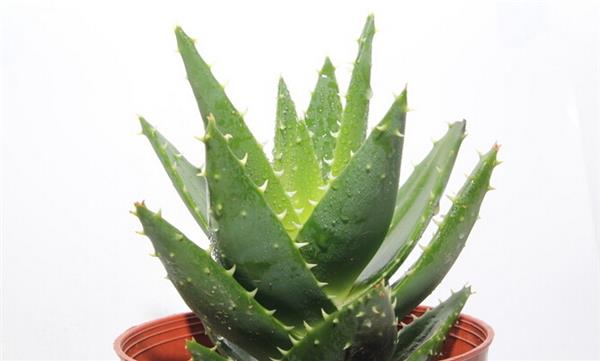
1. Watering of potted aloe is related to the season
In spring, the watering times can be increased appropriately when the temperature is 15 mi 25 degrees Celsius. Generally, 5 mi should be watered once every 7 days, and the principle of no dry and no watering should be adopted, so that the basin soil can be wet as well as dry.
In summer, the temperature is high and the evaporation is large, so it needs to be watered every 3 days. In addition, aloe leaves can be sprayed with water every morning and evening, which can keep aloe leaves green and increase ornamental. Potted aloe in summer should also pay attention to less exposure to the hot sun, so as to reduce the loss of water in potted soil and plants.
The watering of aloe in autumn is basically similar to that in spring. sometimes it is better to water less and make up watering after the basin soil is short of water, rather than make the basin soil in a state of over-saturation for a long time, resulting in insufficient oxygen in the roots of potted aloe, difficulty in breathing and death of aloe plants.
It should be watered as little as possible when the room temperature is low in winter. Generally, it can be watered once every 20 days. If necessary, foliar spraying can be used to keep the basin soil properly dry, which is beneficial for aloe plants to pass the winter safely.
2. Watering of potted aloe is related to water quality.
The tap water in the south contains a high amount of chloride, so it is best to irrigate it with Rain Water or river water. if you must use tap water, you can prepare a large container to put the tap water into the container in advance and expose it in the sun for a few days to make the chloride volatilize. this can not only increase the water temperature, but also reduce the harm of chloride ions in the water. Some aloe lovers use magnetized water to pour aloe, but also get better results, they can make their own magnetized water. Use a larger magnet, then use a 0.5cm latex tube, circle the magnet 20 times, fix the latex tube, slowly enter the water from one end, and release magnetized water from the other end, usually with a flow rate of 1000 grams per hour. Magnetized water can release nutrients in the matrix and increase plant physiological activity. Potted aloe lovers can try it.
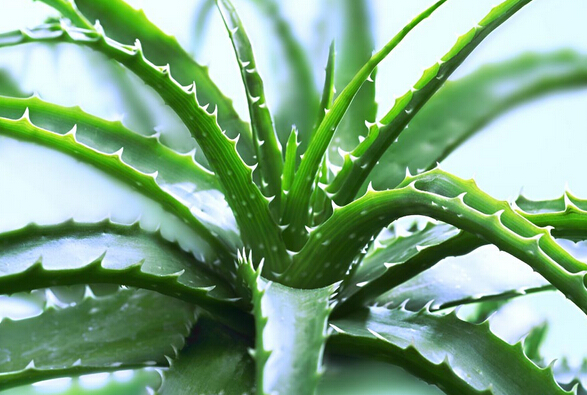
Third, potted aloe watering is related to potted soil.
Aloe vera basin soil to keep moist, too much water is disadvantageous to aloe root system, because aloe has the characteristics of drought and fear of waterlogging, when watering, gently irrigate along the edge of the basin but not hard, lest the basin soil is easy to harden and affect the permeability of the basin soil. when the basin soil is hardened, the soil should be loosened at the right time, with a depth of about 1.5 meters. Except that sufficient watering is needed in summer and water is often sprayed on the leaf surface, watering should be controlled in other seasons, otherwise potting soil is easy to cause stem and leaf rot. Because its fleshy leaves can store a lot of water, aloe is very drought-resistant. When you see the soil surface in the basin becomes dry, you can water it again. Too much watering or stagnant water in the basin will cause rotten roots.
April-June and August-September are the best growth periods of aloe. If the soil is too dry, its growth and development will be affected, so it should be fully watered during this period. It is usually watered after it is fully dry, and thoroughly watered. After this period of time, to properly control watering, so that the soil is not too wet, so that do not dry do not water, watering less, so as not to rot roots. Avoid watering at noon. Watering should be appropriate, if there is wet soil 2 meters below the topsoil, it can not be watered. At the beginning of planting, the soil should be a little drier, not watered, and then watered in half a month. After the slow seedling stage, water is watered every 2-3 days in summer, 6-7 days in spring and autumn, and no watering in winter. Aloe leaves are succulent, with a moisture content of up to 98.5%, and have amazing drought resistance. If aloe is uprooted and dried in a ventilated place, even if there is no water supply, aloe can still use the water in the body to carry out weak life activities and can maintain for more than half a year. At the same time, if it is replanted in the ground to restore water supply, the plant can grow again.
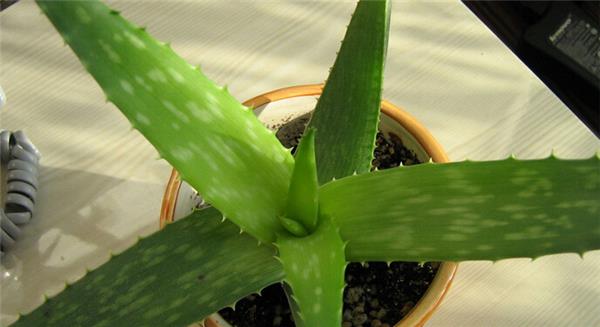
4. watering of potted aloe is related to the period of development.
Aloe has different requirements for water in different development stages. At the seedling stage, the transpiration leaf area is small and the demand for water is also less, but its root system is weak and its distribution in the soil is shallow, so it is very sensitive to the change of water. Therefore, keeping the soil moist is very beneficial to the growth of seedlings. At the adult stage, the demand for water of aloe increased relatively, and the ability of drought tolerance was also significantly enhanced.
Aloe avoid stagnant water in the soil, which can cause rotten roots and leaves for more than 10 hours, and cause the death of the whole aloe plant. The soil water holding capacity is 50% and 60%.
Aloe vera should be watered at the right time. Too much water will make its roots rot, and brown patches or brown rot will appear on the leaves. If the water supply is stopped at this time, it will slowly recover. If it is short of water, it will be dying and its leaves will wither.
The correct watering method is: when watering, it is best not to water from the top, but from the side or root, do not let the water pour on the leaves, so as not to damage the leaves due to high water temperature.
Aloe is a kind of authigenic plant with South Africa as the central producing area, and its vitality is very strong. Excessive care will bring negative effects. So, what are the growth habits and culture methods of aloe?
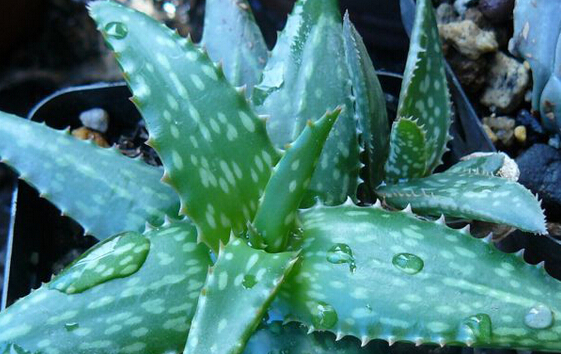
[growth habits]
1. Soil: aloe vera should have a high content of organic matter in an environment with good water permeability and air permeability.
2. Lighting: aloe vera likes sunlight and can withstand semi-shade very well, but taboo about direct sunlight and excessive shade.
3. Temperature: you should know that the temperature most suitable for the growth of aloe is between 20 and 30 degrees, and the temperature at night is also between 14 and 17 degrees. Once it is lower than 10 degrees, it will basically stop growing. When the temperature is below 0 degrees, the mesophyll of aloe will freeze and die.
4. Moisture: aloe vera has strong cold resistance. Even if you leave aloe and leave the soil for a few months, you won't die. Sufficient water is needed during the growth period of aloe vera. It can't stand waterlogging.
[culture method]
Like the warm and humid climate also like the sun and the ability to withstand drought, taboo stagnant water and fear of cold, when the temperature drops to 0 degrees, it will suffer frost damage, and its requirements on the soil is not strict, if planted in dry and barren soil, its leaves will be thin, the color will be yellow, on the contrary, in the fertile soil, its leaves will be thick and green.
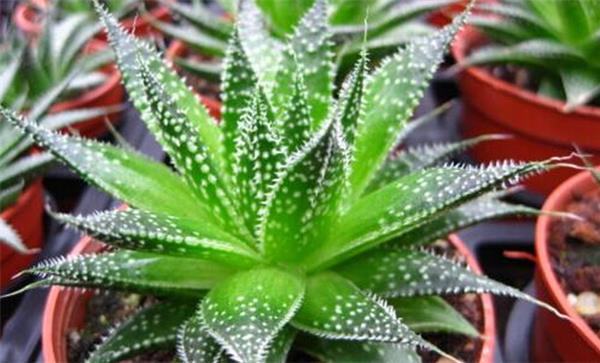
Watering: the basin soil of aloe needs to be kept moist at any time, and too much water is disadvantageous to the growth of its root system, because aloe is resistant to drought and afraid of waterlogging, and it only needs to be watered gently along the edge of the basin when it needs watering. but can not flush hard, so as not to affect the permeability of the basin soil, when the basin soil appears hardening, if the appropriate loosening of the soil.
Fertilization: aloe vera in its growth process, only rely on potted soil nutrients is not enough, but also appropriate fertilization to meet its growth period, fertilizer is generally best to choose organic fertilizer is better, its fertilizer effect is good, and is clean and sanitary. Picking to choose to grow more than a year and a half is better, the picked leaves are also full and smooth and the gravy is clear and transparent, so that the content of various ingredients of aloe is high, and the effect of utilization is the highest.
The above is the introduction of the relevant information about how to correctly water aloe for you. I hope I can help you.
Don't let the water pour on the leaves, so as not to damage the leaves because of the high water temperature.
Aloe is a kind of authigenic plant with South Africa as the central producing area, and its vitality is very strong. Excessive care will bring negative effects. So, what are the growth habits and culture methods of aloe?

[growth habits]
1. Soil: aloe vera should have a high content of organic matter in an environment with good water permeability and air permeability.
2. Lighting: aloe vera likes sunlight and can withstand semi-shade very well, but taboo about direct sunlight and excessive shade.
3. Temperature: you should know that the temperature most suitable for the growth of aloe is between 20 and 30 degrees, and the temperature at night is also between 14 and 17 degrees. Once it is lower than 10 degrees, it will basically stop growing. When the temperature is below 0 degrees, the mesophyll of aloe will freeze and die.
4. Moisture: aloe vera has strong cold resistance. Even if you leave aloe and leave the soil for a few months, you won't die. Sufficient water is needed during the growth period of aloe vera. It can't stand waterlogging.
[culture method]
Like the warm and humid climate also like the sun and the ability to withstand drought, taboo stagnant water and fear of cold, when the temperature drops to 0 degrees, it will suffer frost damage, and its requirements on the soil is not strict, if planted in dry and barren soil, its leaves will be thin, the color will be yellow, on the contrary, in the fertile soil, its leaves will be thick and green.

Watering: the basin soil of aloe needs to be kept moist at any time, and too much water is disadvantageous to the growth of its root system, because aloe is resistant to drought and afraid of waterlogging, and it only needs to be watered gently along the edge of the basin when it needs watering. but can not flush hard, so as not to affect the permeability of the basin soil, when the basin soil appears hardening, if the appropriate loosening of the soil.
Fertilization: aloe vera in its growth process, only rely on potted soil nutrients is not enough, but also appropriate fertilization to meet its growth period, fertilizer is generally best to choose organic fertilizer is better, its fertilizer effect is good, and is clean and sanitary. Picking to choose to grow more than a year and a half is better, the picked leaves are also full and smooth and the gravy is clear and transparent, so that the content of various ingredients of aloe is high, and the effect of utilization is the highest.
The above is the introduction of the relevant information about how to correctly water aloe for you. I hope I can help you.
- Prev

How to solve the problem of green radish leaves yellowing? What are the tips for solving green radish yellowing?
How to solve the problem of green radish leaves yellowing? What are the tips for solving green radish yellowing?
- Next

Tips on how to water orchids correctly to raise healthy orchids
Tips on how to water orchids correctly to raise healthy orchids
Related
- Wuhan Hospital Iron Tree Blooming Result Was Instantly Frightened by the Gardener Master
- Which variety of camellia is the most fragrant and best? Which one do you like best?
- What is the small blue coat, the breeding methods and matters needing attention of the succulent plant
- Dormancy time and maintenance management of succulent plants during dormancy
- Minas succulent how to raise, Minas succulent plant pictures
- What are the varieties of winter succulent plants
- How to raise succulent plants in twelve rolls? let's take a look at some experience of breeding twelve rolls.
- Attention should be paid to water control for succulent plants during dormant period (winter and summer)
- Watering experience of twelve rolls of succulent plants
- Techniques for fertilizing succulent plants. An article will let you know how to fertilize succulent plants.

